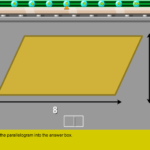 As you know, Common Core-adopting states are less than a year away from completing their transition to the new standards and assessments. As this process inches closer to the 2014-2015 deadline, we have begun to hear the phrase “Common Core math” bantered around quite a bit.
As you know, Common Core-adopting states are less than a year away from completing their transition to the new standards and assessments. As this process inches closer to the 2014-2015 deadline, we have begun to hear the phrase “Common Core math” bantered around quite a bit.
So, what is “Common Core math?”
Read below the break to see why “Common Core math” may not mean what people think it does and what effect the true meaning will have on your students’ learning and your curriculum.
What is “Common Core math”?
At first thought, “Common Core math” kind of sounds like a new way to learn and instruct math (like Singapore Math or Rote math). However, that’s not the case.
This phrase is really just derived from the idea that many educators (and non-educators) believe math curricula and lesson plans across the nation must be significantly altered to meet the new CCSS math standards. In reality, the process of “Common Core math” is not all that different from any mathematics curriculum that prescribes to a current state math standards set. They cover skills and concepts that students should obtain before a certain grade point.
However, it’s important to note that these new standards may represent a pretty significant difference in regards to their focus on less concepts, but deeper understanding and the addition of mathematical practices.
Points of interest for math educators
A focus on student understanding of complex mathematical concepts is at the “core” of Common Core math. Connecting mathematical formulas and theories to real-life application and reasoning outside of the academic study of mathematics is a primary goal of the new standards, which is described as “College and Career Readiness“.
Let’s take a look at the reasoning behind a few of the key concepts that make up the idea of “Common Core math”:
- Students are required to obtain the ability to justify why a mathematical rule is true. According to the Common Core folks, if a student understands a rule or process, such as the commutative property, he/she can better apply the rule to other mathematical, and real-world, tasks.
- A student with the ability to make sense of problems and show perseverance in the solving process, rather than solving a problem based on memorized bits-and-pieces, will develop stronger mathematics skills in the long run. To me, that’s pretty obvious. A classic example of this is the mantra, “show your work”. If a student can do that effectively, it means he or she is asking if the solution makes sense.
- Additionally, if a student can make sense of his/her mathematical processes, the student can then communicate the conclusions to others (and respond to the arguments of others). The value of being able to argue and collaborate effectively and accurately is very high in the post-K12 world.
So, what does this mean for my curriculum?
Let’s look at patterns: you can find them all over within mathematics, but recognition is only the beginning of understanding within a “Common Core math” setting.
The Common Core math standards and mathematical practices emphasize the importance of understanding the pattern and developing the ability to create or continue patterns. According to the CCSS, the process of scaffolding higher order skills is vital both for immediate understanding and the development of future skills and concepts.
Helping students develop and apply these long-term critical thinking skills has long been the focal point of mathematics education. With that in mind, remember that even though “Common Core math” may seem daunting from an educator’s perspective, providing your students the math skills they need to excel outside (and beyond) the classroom is paramount.
Continue the “Common Core math” conversation!
This blog post only begins to shed light on the idea behind math instruction in the Common Core era. We’d love to hear your comments, questions, and concerns about “Common Core math” and what it means to your students and curriculum.
Start your conversation on our Facebook Page or Tweet us at @Wowzers.
To learn how Wowzers K-8 Online Math program can help teachers make learning fun, contact our team or try a free trial.

0 Comments